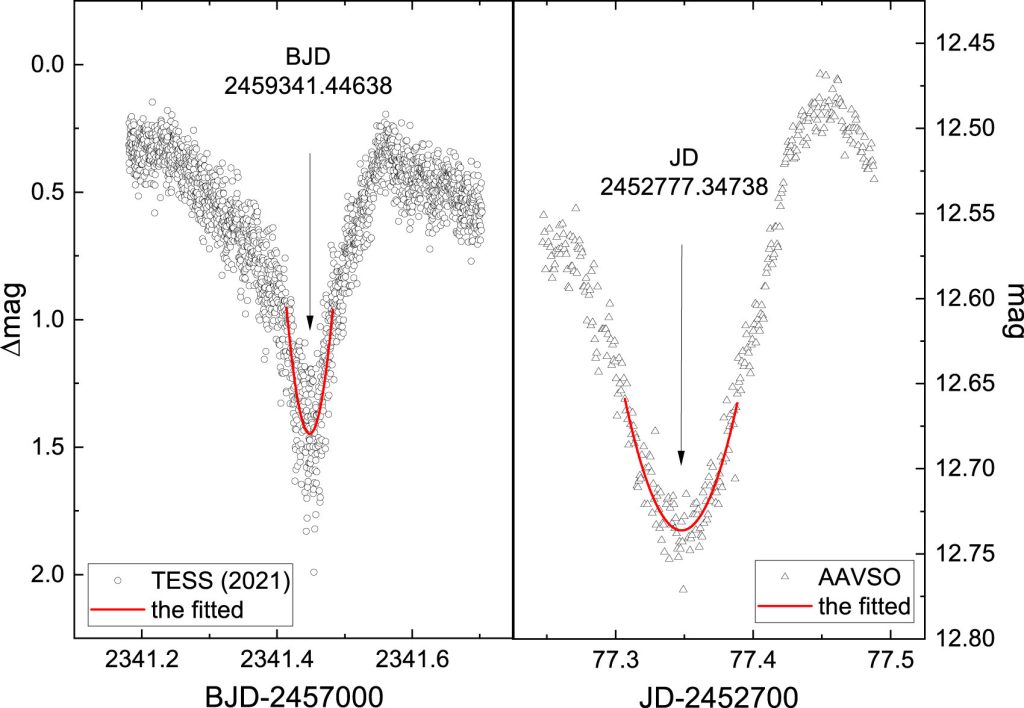An example of fitting the eclipse timings for WX Cen using the TESS and AAVSO data, respectively. Credit: The Astrophysical Journal (2023). DOI: 10.3847/1538-4357/acb52f
Researchers led by Ph.D. candidate Zang Lei and Prof. Qian Shengbang from the Yunnan Observatories of the Chinese Academy of Sciences have discovered that the orbital evolution of the supersoft X-ray source WX Centauri (WX Cen) is dominated by the angular momentum loss (AML) driven by magnetic wind from the donor secondary and from the accretion disk alone or together.
This work was published in The Astrophysical Journal on Feb. 15.
WX Cen is most likely one of the Galactic counterparts of close binary supersoft X-ray sources (CBSS), where mass is transferred from a donor secondary to a massive white dwarf primary via an accretion disk.
To further study their mass exchange and the orbital evolution, the researchers analyzed the orbital period variation of WX Cen in detail by using the continuous Transiting Exoplanet Survey Satellite (TESS) light curves and the photometric observations collected by American Association of Variable Star Observers (AAVSO) database. The result implies that the orbital period is continuously decreasing.
Moreover, based on the results of previous research, the researchers estimated that the mass of the donor secondary is about 0.6 solar mass, when the white dwarf mass is about 0.9 solar mass.
By considering a conservative mass transfer from the donor secondary to the white dwarf, the orbital period of WX Cen should be increasing, which is opposite to the observed continuous decrease. Therefore, the researchers speculated that the decrease in the period can be plausibly explained as the result of AML caused by magnetic wind from the secondary and from the accretion disk alone or together.
Based on the above physical scenario, the researchers calculated the relationship between the Alfvén radius and mass-loss rate of the system. They found that if the Alfvén radius of the secondary gets smaller than 20 solar radius, the mass-loss rate required to reduce the orbital period will be too high to be supported by stellar wind loss alone. And the Alfvén radius of the accretion disk is more than 5.5 solar radius.
More information: Lei Zang et al, The Evolution of the Supersoft X-Ray Source WX Cen Dominated by Magnetic Wind, The Astrophysical Journal (2023). DOI: 10.3847/1538-4357/acb52f
Provided by Chinese Academy of Sciences
Citation: Evolution of supersoft X-ray source WX Centauri is dominated by magnetic wind, find researchers (2023, March 15) retrieved 27 March 2023 from https://phys.org/news/2023-03-evolution-supersoft-x-ray-source-wx.html
This document is subject to copyright. Apart from any fair dealing for the purpose of private study or research, no part may be reproduced without the written permission. The content is provided for information purposes only.

